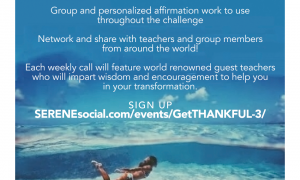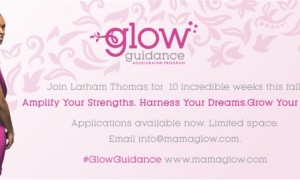I recently caught up with Goldie Hawn, who is an Academy Award winning actress, producer, director, best-selling author and children’s advocate. She is the founder of The Hawn Foundation, a public charity with a mission to equip children with the social and emotional skills they need to lead smarter, healthier, and happier lives.
Goldie began The Hawn Foundation in 2003 to apply cutting edge scientific research to create education programs that support the social and emotional development of children. Goldie is also the author of the best-selling A Lotus Grows in the Mud and Ten Mindful Minutes. In 2009, the Substance Abuse and Mental Health Services Administration (SAMHSA) presented Goldie with a special award for her work to increase public understanding of mental health. To keep up with her latest updates, follow her on Twitter @goldiehaw.
In this interview, she talks about why she decided to start her foundation and how her acting career affected the creation of her foundation. She then gives two examples of children who have benefited from her program and shares her best career advice.
When did you decide to start your foundation and what was your vision for what it could become?
I started the foundation in 2002. I started thinking about it because I’ve always been involved with children charity, all through philanthropic highways, whether I’ve adopted children or whatever. I looked at the state of the world at that point and realized through my own intuition that our world would never be the same. In doing so, the children were very traumatized and the media was relentless. I thought that we needed to have some intervention, or prevention, if you will, to start leading these kids down a different path. I felt they were gonna be experiencing stressors that are unprecedented in our history. That and stress is a very, very dangerous thing, not just because of what the brain does or doesn’t do, but because of the re-activity that we, as adults, and especially, children, whose brains are just developing are going to experience and be molded by those fears.
Fear is a very, very dangerous thing, because fear turns into anger, and anger is poisonous. I decided that I would try something without having any knowledge of the educational system. I didn’t even know the phrase “social and emotional learning”. I was just doing what I would consider my charitable work with what I saw that could create a shift and changes in children. I was in Vancouver with my son because he wanted to play hockey and I wanted him to follow through with his dreams. He was our last baby. I left LA and went up there and decided at that point, that I’d spent a lot of time, my quiet time. Some people call it meditation, and I call it my quiet time, where I have a meditation, but it’s also reflection time and it’s in my own room. I create my own space. This has been my own practice. It came to me then to bring this knowledge to school. I thought we could write a curriculum. That curriculum is held a little bit about the brain for children, obviously, and a very simple way for teachers to teach and also for them to have a quiet time in the classroom for reflection and to reduce their stress level.
The Hawn Foundation
Then we did mindful techniques, which were just fun things to add in the curriculum but were really giving them a period of ability to watch themselves, the ability to play the game, whether it’s to take the raisin, to move slowly to eat the raisin rather than gobbling it up or whether it was to be mindful of your listening and hearing. You could give other people the opportunity to express themselves. Then the steps were taken, which was to read a book and take and understand the characters in the book as to why you think they do what they do, to create a level of empathy, because empathy is something that we are losing in our children and in our society. There isn’t a sense of responsibility that we have to each other.
My son did a very interesting experiment, at that time, on the level of empathy, in that he fell down on a wall and he laid there for 20 minutes before anyone asked him if he was okay. That’s something that we, as a global nation, can not allow to happen. I want to create empathy in this in order to stimulate that neurological response and to develop it because it needs to be developed. The brain needs to be developed. You can’t teach that. So, I put this program together and my instinct was “If I change, in my charitable efforts, three children, then maybe I’ll change six children, maybe it’ll be just a classroom. I didn’t have a global dream but I didn’t have a realistic approach. All I wanted to do is to see if this could change children’s lives, even within the classroom construct. I put this together. We researched at the University of British Columbia. What came back was so profound.
We did a Cortisol test, where these children were able to manage their Cortisol levels better than the children in this control group, which means that they were able to take their stress level. Our Cortisol goes up all day and it has moments when it goes down and moments when it goes up . This group had no management of Cortisol. Cortisol was all over the place. They were up, they were down, they were up, they were down. Ours were able to manage systematically their stress response, which is a huge scientific discovery. In January, the children were happier, 83% happier in the classroom than the control group. We also saw they worked together better and there was, I think a 28% reduction in aggression on the playground. So, we looked at these results and went “Oh, my God.” I mean, this is crazy. This has made such a difference with these children. And look at the simple techniques we put together and put them in the classroom. And, by the way, we had teachers who were so happy to do it, which is a big issue because you have to get buy-ins from the principals, the teachers, and also from the school board.
It was a full-court press to have everyone on board. Everything was set up right. What I found interesting was that children with low intervention became more depressed as the school year went on. That was the most interesting piece of this because, with intervention, the children were able to upgrade their well-being. With no intervention and just classroom activity after classroom activity, these children actually LOST well-being. So, when you look at this, you go, “Well, let’s go, man! Let’s create this!” So, we did, and in doing so, we created an even more beautiful curriculum that Scholastic wanted to publish because they said, “We want to be on the wave of this kind of intervention in the educational realm. They were the first people of the publications to put out MindUP which is the name of the program. All teachers and all children, all over the globe said that “Three times a day you take a brain break.”
Who in the world would think their child needs a brain break? But that’s what we do. And they were right on board with it, so we published it. And then we started moving into school districts. It took off in Vancouver and it’s taking off in the United States. We’re working with Dade County but it’s not easy. It’s not easy because you get a lot of resistance from people to change the way in which they do things. We have a lot of resistance oftentimes from teachers, who don’t want to learn any new things because they are so inundated with programs that they just wanna throw their hands up. They’re overworked and underpaid. So, you’re dealing with a lot of issues. We’ve now moved into the United Kingdom. We’ll be in 20 schools, which will be twenty thousand children. Hong Kong wanted it, so we brought it into there. We’re also in Australia. We didn’t even sell the program. It is what you’d call “push and pull”. We didn’t push it there. That’s where we are right now with the organization.
It’s been a lot of work for me and a tremendous amount of dedication and frustration and a great amount of pride and love because I see it working for these children. As busy as I’ve been, as hard as it’s been, as difficult as it’s been at times, I just say “I’ve thought, my goodness, that it’s taken over my life”. Sometimes, I just wanna throw this thing at the wall because it’s the hardest thing I’ve ever done. I’ve produced movies that were hard. I’ve acted in movies that were difficult, but there was always an end in sight, and this, you can’t walk away from this, because, these are the new tools and techniques that we must get in these schools. I’m deeply, deeply passionate about creating peace and well-being in the classroom, and well-being as a global nation. I’m talking a lot. so that’s why I got into it.
How has your acting career impacted the growth and success of the foundation? Do you think you could’ve built it without the fame that you had already established?
I think that it’s a double-edged sword, and the double-edged sword is that the image that people have within our industry is rather cavalier. Oftentimes, actors are looked at as court jesters. They are not looked at as deep-thinking, smart people who do many other things or have gifts in other areas. So, the visibility is great and it does allow you to go and speak about these things and you know people are gonna come because they may just hear a little bit about your family. They may just hear a little bit about you. Or the curiosity factor is huge and they wanna go and listen because they’d like to see, whoever that person might be, in person.
The difficulty for me was that I did make my career in the industry. I love making people laugh and by the way I still do that with the charitable efforts on my part because I believe that people need to laugh. I think it’s therapeutic and it’s vitally important. Even those who make this cry in our industry are doing a service to people because they can express feelings. I believe that we all need to do charitable work. It should be taken seriously in the area of education, as someone from the industry. It’s not always easy because they don’t see you that way and when they talk about the concretization of ideas and perceptions and thoughts and thought patterns, people naturally do get excited.
Even as an actress, to become a dramatic role, people don’t wanna see that. I’ve done a few dramatic roles. These movies didn’t do well because it’s not what people expect to see. People, when they see Goldie Hawn or anyone who comes out of the realm of expectation. I think that it is absolutely forgivable but it made it very difficult. The other side is looking at these scientists and Golden Hawn creating a program. The idea of looking sideways to that is to say, “Well, what does she know?” For the first years, it was not easy being taken “seriously”, which is why I had the research done from the get-go and there was no research ever like this done on kids. It was always done on adults, so we were real trailblazers because I knew personally that the research wasn’t there to take it seriously. This program is the star. I’m not the star; it’s the program. And all I wanted to do, was, one day, be able for people to say MindUP is the best thing going, not Goldie Hawn.
I think we’ve got there. It’s been 10, going on 11 years now, and I think that we’ve finally got there. How does it influence the work that I’m doing? Because I’m a communicator; because that’s what we do. And also, I’m someone who looks at human nature and human behavior because we pattern our goals after that. That’s part of our training. Why do I think that this amount of work has taken me to this level ? Because I care. Because I care, and I have great empathy, not only for the characters that I’ve portrayed, but for people at large.
When you’re working with students as well as people who educate them, how do you go about communicating to them, in a way, that, you know, makes them wanna take action?
Well, first of all, the reason why we did the research is so it would speak for itself. I can walk in with a full-on scientific research document that is classifiable and clearly inarguable and done by the University of British Columbia, which is one of the big research universities in the world. I had, under my arm, proof. But I didn’t have to necessarily give it to them. All I needed to do with them is share my personal experience, my wish for the future and, basically, my wish for them because they would be able to control their classrooms for the first time because the children would be less reactive, happier, and more productive. We have people within organizations that are trainers, that go out and speak. So, I’m not the one that goes out and speaks to the educators. I don’t go to conferences and talk to educators and speak as I’m speaking to you. I don’t go out and solicit schools either.
When you’re at the conferences and free to get questions, what are these educators asking you when they have questions?
For the most part, I’ve done some speaking engagements, conferences and served as a keynote speaker. I think the question they want to know is “Explain to me how this works so I can tell them about our 15-lesson program” and “what are the things that we cover”. I explain to them how vital and important it is for our children to understand their neurobiological constructs, to give them context to their emotions. It puts them in the driver’s seat. I explain to them how they’d benefit from doing this and how they will benefit themselves from doing this. It isn’t about me. They don’t ask about my life.
Can you share a story of a child who has benefited from your foundation?
There’s this one little boy. I went to his classroom many years ago. I sat with him, and we talked about a bunch of stuff. We were dialoguing, just sharing feelings and emotions and I asked him “Well, how are you benefiting from doing the program?” He was 8 and he said, “I was on the playground the other day and my best friend pushed me and it really made me angry, but I decided to just stop and breath.” We talk a lot about breathing for the kids. After so many times, you take a breath, it could be 40 seconds or whatever and the brain changes, and the amygdala, which is in the center of the brain, which is the emotional system, the Limbic System of the brain, begins to quiet down. Once that quiets down, the children put that barking dog back in the dog house. And they learn that the executive prefrontal cortex begins to light up and it begins to think, ‘cause that’s our thinking brain; that’s when we decide to make the right choices.
When you’re on fire and you’re angry and you’re reactive, which is what we tell the kids, you’re not gonna be able to make the right choices and you might do something you’re really sorry for. So, he said, “I took my three books and then I realized that if I pushed him back he wouldn’t be my best friend anymore.” Well, this is about creating cognition, giving kids the break to think and making the right decision. This is taught. You have to teach this, but he has the understanding that if he puts the dog back in the dog house, like he did with his friend, he would feel better and he wouldn’t make the wrong decisions. I think it’s such a good example of what some of these children are experiencing, because part of it is self-protection, which is “I really wanna be his friend.” The other part is meta-cognition, which is the ability to see yourself.
One little boy was crying in the classroom and his teacher hadn’t yet entered. The kids were mowing around. One of the little boys came up and said, “Johnny is crying and maybe we should do our circle and take our breathing because maybe it’ll help him. We’re dealing with this community in the classroom and we’re also dealing with building. So, they sat down in a circle. She took her lead and they did their breathing and said “What’s wrong?” And he said, “My daddy went away to war and I won’t see him for 6 months.” And the other little boy said, “My dad went away, too, but he had cancer and I wasn’t allowed to see him for two months” he said, “but he’s back home now.” And another little boy said, “Well, I can’t see my dad for another six years” because he was in jail.
Another little boy chimed in and said, “Well, my dad and my mom split up and they got divorced and it really made me sad, but I see my dad now every other weekend” and he feels better. Well, that child, himself, he stopped crying, and he felt a part of his community, because these kids just naturally shared what their feelings were. You know how long that took? Five minutes in the school day and the teacher thinks that they can’t, at times, hear and feel what other are children are grateful for, which we do in our program. Then, why not educating the whole child? We’re ignoring the most important part of our children, which are emotions that drive them, that actually create their reality.
What is your best career advice?
You cannot decide what you are going to do until you go deep inside yourself and face your fears and face your own psychology in a way that is brave and sometimes scary. During the University of You, find out what it is that triggers you and what is it that stops you. Who are you in relation to your friends, to your family, in the world at large. Do you feel you matter? Do you have self-love? What is it that makes you tick? What are the things that you really care about? What interests you? I don’t care if it’s trying a fly on the end of a fishing rod. Be the best flier in the world. Do it to the best of your ability. Don’t do it because it’s gonna make you a million dollars, do it because it’s something that you believe in, in which case you’re the one that’s owning a company, the greatest company, whether it’s flying and game stores will buy your flies because there aren’t better ones to buy. Because you’re doing something that you’re passionate about. Those passions that you make or find are yours and only yours to discover.
When you get there, remember that your level of happiness is the most important thing you have to protect because once you’re caught up in the rat race of work and duty and money, it is that you do not live beyond your means. I don’t care whether the person next to you is making a million bucks and you’re making way less. If you judge yourself by that person, you’re not judging yourself by your intrinsic joy and what makes you feel happy; that’ll make your family unhappy, that’ll ruin your relationship with your wife; and all because the stress of what it is you can’t do, instead of what it is you can do.
Don’t be lazy. Go after your dream. Get knocked down and get back up. Because the measure of the man is not how many times he gets knocked down, it’s how quickly he gets up. Get up on your feet. If my son Wyatt was a hockey player and he was a goal tender, and he would go down to that puck and he’d get knocked over and he would get knocked over and he would get hurt and he would do all the things. He was the last line of defense. I said to him once, “Wyatt it’s not how many times you get knocked down, it’s how fast you get up on those skates and recover.” Recovery and resilience is vitally important for success and that’s tenacity and intuitiveness. It is all the things that you need to move forward and also a great sense of self.
Dan Schawbel is the author of the upcoming book, Promote Yourself: The New Rules For Career Success (St. Martin’s Press, Sept 3rd).









No Comments